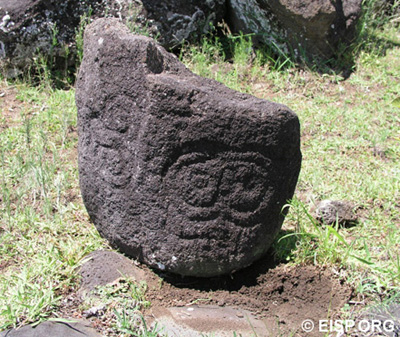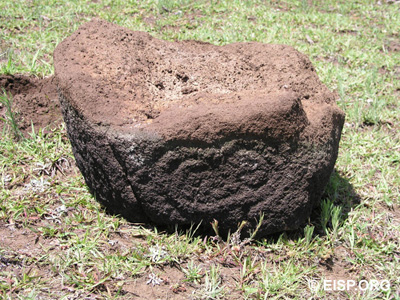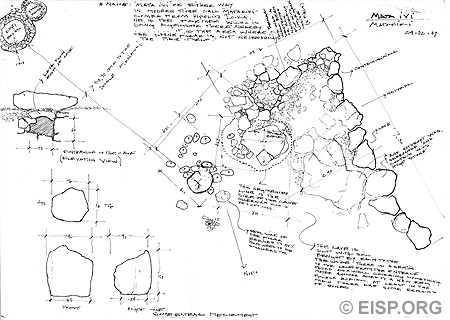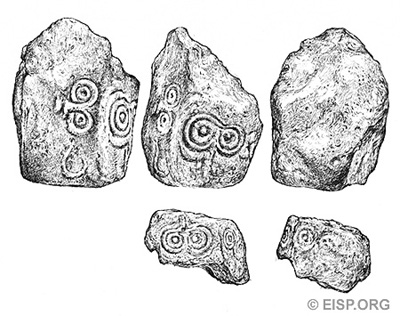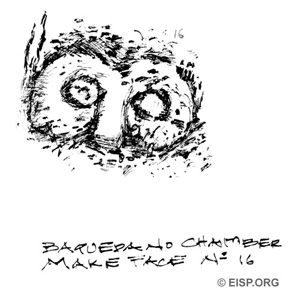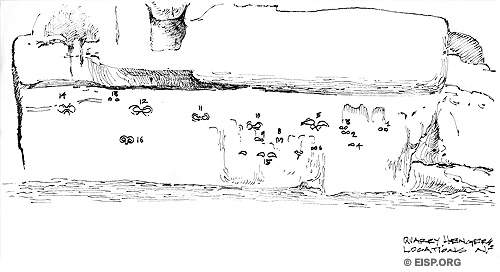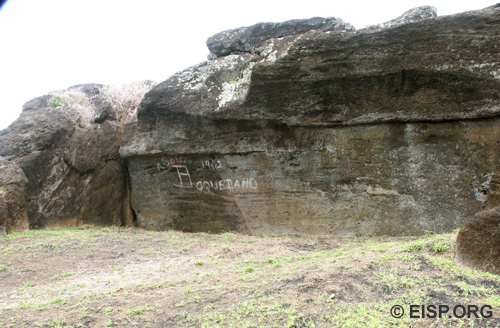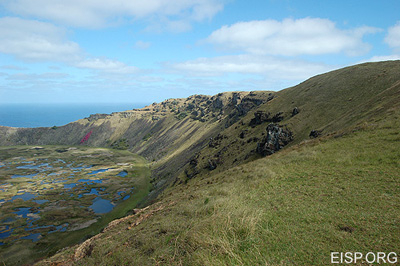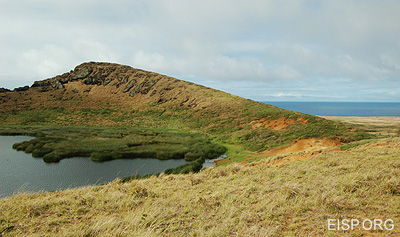Makemake Rock Art Motifs
Easter Island Statue Project History: 1981
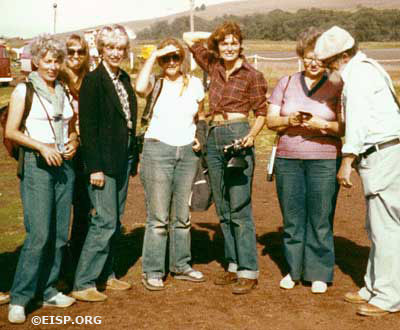
UREP Project Participants, Hanga Roa, Mataveri Airport, (left to right) Joan Seaver, Marcia Opel, Joanne Weinhof, Georgia Lee, Jo Anne Van Tilburg, Esther Schwartz, Ron Hoskinson. Photo by: Johannes Van Tilburg/EISP
In the summer of 1981, Jo Anne Van Tilburg was a member of the University of California Research Expeditions Program (UREP). Led by Georgia Lee and conducted under the auspices of Chile’s Council of Monuments, the goal of the six-week volunteer project was to investigate the nature and extent of the island’s corpus of rock art.
Rock art recording on Easter Island consisted of making photographs and scale drawings at about 25 petroglyph sites and one painted site. Some sites were damaged, and others had been previously recorded in one way or another. At the major tourist sites of Anakena, Tongariki, and Orongo, we made rubbings.
Statues and Rock Art: Rano Raraku and Rano Kau
Like Rano Raraku, Rano Kau, in the western, higher ranked district of [Ko] Tu’u also contains a freshwater lake 1 km in diameter. In sharp contrast, however, Rano Kau is formed not of tuff but of locally quarried dark gray to black basalt and related types of smooth, dense and hard volcanic rocks.
Rano Raraku and Rano Kau were each believed to embody aspects of Rapanui identity, history, and mythological narrative. Each was uniquely exploited for the main purpose of expressing the shared cultural awareness of deeply ingrained and ancient status alignments. Alternative forms of the carvers’ art (sculpture in Rano Raraku and petroglyphs at Rano Kau) stated and reinforced the main social east/west division through form, style, iconography, and metaphor. [Read More…]
 English
English  Español
Español 